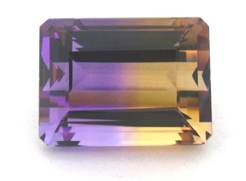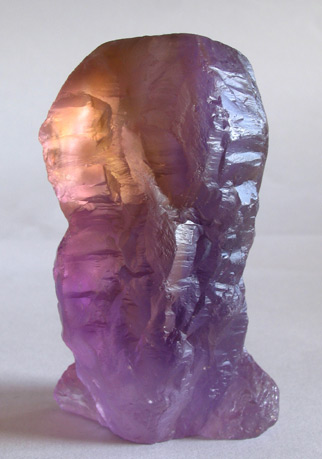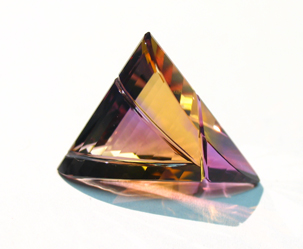Ametrine is mined in only one place, the Anahi mine in Bolivia. Leading to it also being known as Bolivianite. It is differing temperatures that cause the bi-color effect, with the Citrine tones caused by a higher temperature and cooler Lilac hues appearing in the cooler areas.
Ametrine. These "gemstones" are bright blue and green, yellow and green, orange and blue, yellow and blue, orange and green and even what one expects of Ametrine - Purple and Yellow.
The word/term Ametrine is a contraction of Amethyst-Citrine, where Amethyst is purple and Citrine is a gold or yellow. The material comes from only one place in the world - Bolivia, not far from the Brasilian border. The material coming out of this one mine (Anahi), can be just Citrine, just Amethyst or a combination of the two - Ametrine. Cutting a gemstone with the two colors will produce a gem that one can call Ametrine.
There are various grades of this material also, just like all gemstones. We still have some incredible material purchased in the very early 1980s while on a gemstone purchasing trip in Brasil. These gems are a deep purple and deep yellow. This is in keeping with what All That Glitters seeks to place into inventory - gems that are unique, rare or unusual for that species, in this case, a nice deep rich color for both the purple and the yellow. The typical Ametrine that one usually sees on the market, especially on tv, is the very pale material - so pale at times, that one must hold it against a white background to observe the color. This more common material is the cheapest material in Ametrine.



 RSS Feed
RSS Feed


